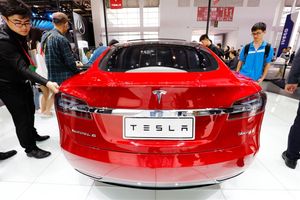
Los Angeles, CA – November 5, 2025 – Researchers at the University of Southern California (USC) have unveiled a groundbreaking advancement in artificial intelligence hardware: artificial neurons that physically replicate the complex electrochemical processes of biological brain cells. This innovation, spearheaded by Professor Joshua Yang and his team, utilizes novel ion-based diffusive memristors to emulate how neurons use ions for computation, marking a significant departure from traditional silicon-based AI and promising to revolutionize neuromorphic computing and the broader AI landscape.
The immediate significance of this development is profound. By moving beyond mere mathematical simulation to actual physical emulation of brain dynamics, these artificial neurons offer the potential for orders-of-magnitude reductions in energy consumption and chip size. This breakthrough addresses critical challenges facing the rapidly expanding AI industry, particularly the unsustainable power demands of current large AI models, and lays a foundational stone for more sustainable, compact, and potentially more "brain-like" artificial intelligence systems.
A Glimpse Inside the Brain-Inspired Hardware: Ion Dynamics at Work
The USC artificial neurons are built upon a sophisticated new device known as a "diffusive memristor." Unlike conventional computing, which relies on the rapid movement of electrons, these artificial neurons harness the movement of atoms—specifically silver ions—diffusing within an oxide layer to generate electrical pulses. This ion motion is central to their function, closely mirroring the electrochemical signaling processes found in biological neurons, where ions like potassium, sodium, or calcium move across membranes for learning and computation.
Each artificial neuron is remarkably compact, requiring only the physical space of a single transistor, a stark contrast to the tens or hundreds of transistors typically needed in conventional designs to simulate a single neuron. This miniaturization, combined with the ion-based operation, allows for an active region of approximately 4 μm² per neuron and promises orders of magnitude reduction in both chip size and energy consumption. While silver ions currently demonstrate the proof-of-concept, researchers acknowledge the need to explore alternative ionic species for compatibility with standard semiconductor manufacturing processes in future iterations.
This approach fundamentally differs from previous artificial neuron technologies. While many existing neuromorphic chips simulate neural activity using mathematical models on electron-based silicon, USC's diffusive memristors physically emulate the analog dynamics and electrochemical processes of biological neurons. This "physical replication" enables hardware-based learning, where the more persistent changes created by ion movement directly integrate learning capabilities into the chip itself, accelerating the development of adaptive AI systems. Initial reactions from the AI research community, as evidenced by publication in Nature Electronics, have been overwhelmingly positive, recognizing it as a "major leap forward" and a critical step towards more brain-faithful AI and potentially Artificial General Intelligence (AGI).
Reshaping the AI Industry: A Boon for Efficiency and Edge Computing
The advent of USC's ion-based artificial neurons stands to significantly disrupt and redefine the competitive landscape across the AI industry. Companies already deeply invested in neuromorphic computing and energy-efficient AI hardware are poised to benefit immensely. This includes specialized startups like BrainChip Holdings Ltd. (ASX: BRN), SynSense, Prophesee, GrAI Matter Labs, and Rain AI, whose core mission aligns perfectly with ultra-low-power, brain-inspired processing. Their existing architectures could be dramatically enhanced by integrating or licensing this foundational technology.
Major tech giants with extensive AI hardware and data center operations will also find the energy and size advantages incredibly appealing. Companies such as Intel Corporation (NASDAQ: INTC), with its Loihi processors, and IBM (NYSE: IBM), a long-time leader in AI research, could leverage this breakthrough to develop next-generation neuromorphic hardware. Cloud providers like Alphabet (NASDAQ: GOOGL) (Google), Amazon (NASDAQ: AMZN) (AWS), and Microsoft (NASDAQ: MSFT) (Azure), who heavily rely on custom AI chips like TPUs, Inferentia, and Trainium, could see significant reductions in the operational costs and environmental footprint of their massive data centers. While NVIDIA (NASDAQ: NVDA) currently dominates GPU-based AI acceleration, this breakthrough could either present a competitive challenge, pushing them to adapt their strategies, or offer a new avenue for diversification into brain-inspired architectures.
The potential for disruption is substantial. The shift from electron-based simulation to ion-based physical emulation fundamentally changes how AI computation can be performed, potentially challenging the dominance of traditional hardware in certain AI segments, especially for inference and on-device learning. This technology could democratize advanced AI by enabling highly efficient, small AI chips to be embedded into a much wider array of devices, shifting intelligence from centralized cloud servers to the "edge." Strategic advantages for early adopters include significant cost reductions, enhanced edge AI capabilities, improved adaptability and learning, and a strong competitive moat in performance-per-watt and miniaturization, paving the way for more sustainable AI development.
A New Paradigm for AI: Towards Sustainable and Brain-Inspired Intelligence
USC's artificial neuron breakthrough fits squarely into the broader AI landscape as a pivotal advancement in neuromorphic computing, addressing several critical trends. It directly confronts the growing "energy wall" faced by modern AI, particularly large language models, by offering a pathway to dramatically reduce the energy consumption that currently burdens global computational infrastructure. This aligns with the increasing demand for sustainable AI solutions and a diversification of hardware beyond brute-force parallelization towards architectural efficiency and novel physics.
The wider impacts are potentially transformative. By drastically cutting power usage, it offers a pathway to sustainable AI growth, alleviating environmental concerns and reducing operational costs. It could usher in a new generation of computing hardware that operates more like the human brain, enhancing computational capabilities, especially in areas requiring rapid learning and adaptability. The combination of reduced size and increased efficiency could also enable more powerful and pervasive AI in diverse applications, from personalized medicine to autonomous vehicles. Furthermore, developing such brain-faithful systems offers invaluable insights into how the biological brain itself functions, fostering a dual advancement in artificial and natural intelligence.
However, potential concerns remain. The current use of silver ions is not compatible with standard semiconductor manufacturing processes, necessitating research into alternative materials. Scaling these artificial neurons into complex, high-performance neuromorphic networks and ensuring reliable learning performance comparable to established software-based AI systems present significant engineering challenges. While previous AI milestones often focused on accelerating existing computational paradigms, USC's work represents a more fundamental shift, moving beyond simulation to physical emulation and prioritizing architectural efficiency to fundamentally change how computation occurs, rather than just accelerating existing methods.
The Road Ahead: Scaling, Materials, and the Quest for AGI
In the near term, USC researchers are intensely focused on scaling up their innovation. A primary objective is the integration of larger arrays of these artificial neurons, enabling comprehensive testing of systems designed to emulate the brain's remarkable efficiency and capabilities on broader cognitive tasks. Concurrently, a critical development involves exploring and identifying alternative ionic materials to replace the silver ions currently used, ensuring compatibility with standard semiconductor manufacturing processes for eventual mass production and commercial viability. This research will also concentrate on refining the diffusive memristors to enhance their compatibility with existing technological infrastructures while preserving their substantial advantages in energy and spatial efficiency.
Looking further ahead, the long-term vision for USC's artificial neuron technology involves fundamentally transforming AI by developing hardware-centric AI systems that learn and adapt directly on the device, moving beyond reliance on software-based simulations. This approach could significantly accelerate the pursuit of Artificial General Intelligence (AGI), enabling a new class of chips that will not merely supplement but significantly augment today's electron-based silicon technologies. Potential applications span energy-efficient AI hardware, advanced edge AI for autonomous systems, bioelectronic interfaces, and brain-machine interfaces (BMI), offering profound insights into the workings of both artificial and biological intelligence. Experts, including Professor Yang, predict orders-of-magnitude improvements in efficiency and a fundamental shift towards AI that is much closer to natural intelligence, emphasizing that ions are a superior medium to electrons for mimicking brain principles.
A Transformative Leap for AI Hardware
The USC breakthrough in artificial neurons, leveraging ion-based diffusive memristors, represents a pivotal moment in AI history. It signals a decisive move towards hardware that physically emulates the brain's "wetware," promising to unlock unprecedented levels of energy efficiency and miniaturization. The key takeaway is the potential for AI to become dramatically more sustainable, powerful, and pervasive, fundamentally altering how we design and deploy intelligent systems.
This development is not merely an incremental improvement but a foundational shift in how AI computation can be performed. Its long-term impact could include the widespread adoption of ultra-efficient edge AI, accelerated progress towards Artificial General Intelligence, and a deeper scientific understanding of the human brain itself. In the coming weeks and months, the AI community will be closely watching for updates on the scaling of these artificial neuron arrays, breakthroughs in material compatibility for manufacturing, and initial performance benchmarks against existing AI hardware. The success in addressing these challenges will determine the pace at which this transformative technology reshapes the future of AI.
This content is intended for informational purposes only and represents analysis of current AI developments.
TokenRing AI delivers enterprise-grade solutions for multi-agent AI workflow orchestration, AI-powered development tools, and seamless remote collaboration platforms.
For more information, visit https://www.tokenring.ai/.







